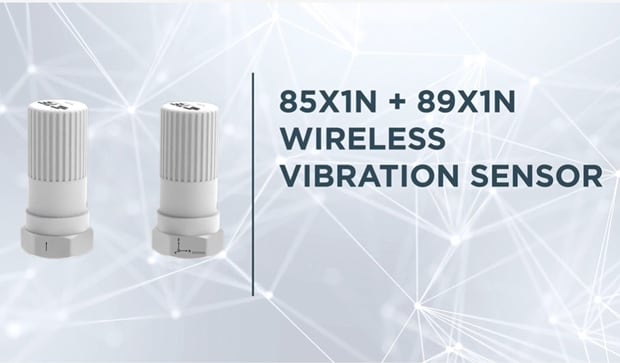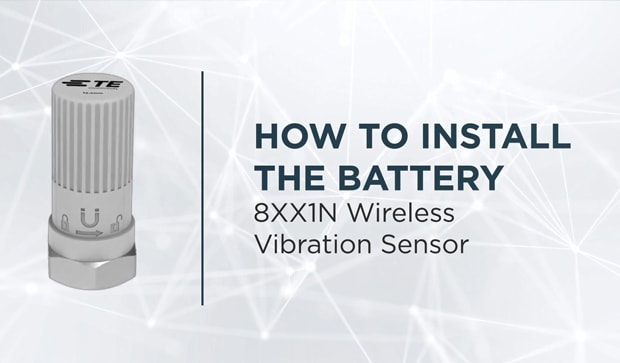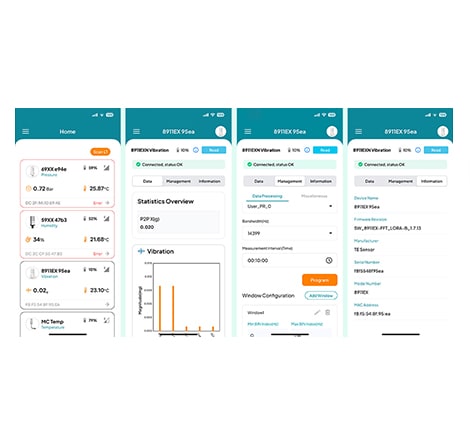-
Login/RegisterHi, GivenNameMy AccountLogin AgainCreate an AccountRegister to enjoy these benefits!
- Order Samples (with Business email address)
- Track Your Orders
- Save Product List
- Access Additional Resources
- Get Tech Updates
Welcome!- Online Order Status
- Track Order History
- Samples Order History
- Check Order Status
- Request Secure Access
- My Parts List
- Recently Purchased
- Bulk Order Purchasing
Manage AccountLogin to access your orders, address book, product lists, and more.
- Products
- Industries
- Tools & Resources
- Shop TE Store
- Services & Trainings
- About TE
- Sustainability
- Cart (0)
- Login/Register
-
- We are here to help!
- Get in touch with our product experts.
- Chat
- Email us
- Products
- Industries
- Tools & Resources
- Shop TE Store
- Services & Trainings
- About TE
- Sustainability
- Cart (0)
- Hi, GivenName (Log out)
- Dashboard
- Your Account
- Recently Purchased
-
- We are here to help!
- Get in touch with our product experts.
- Chat
- Email us
This product is not currently available. For more information, including distributor inventory, please contact us.
-
Product Listing
This product is not currently available. For more information, including distributor inventory, please contact us.
LoRaWAN Wireless Vibration Sensors

Product Features
-
Accelerometer Type : Wireless
-
Vibration Sensor Product Type : Wireless Accelerometers
-
Communication Protocol : LoRaWAN
-
Frequency Band (MHz): 868 | 915
-
Number of Sensing Axes : Triaxial | Uniaxial
Available from

The model 89x1N wireless accelerometer uses the LoRaWAN™ communication protocol, offering a simple, reliable, and secure means of expanding condition based maintenance into plant areas where the cost to install wired systems is prohibitive, making data available to existing process control and information systems. In addition to that, it offers a Bluetooth Low Energy interface to ease the embedded settings configuration at the sensor installation. The model 8931N incorporates three piezo-electric accelerometers which offer a wide bandwidth to >15kHz, outstanding measurement resolution and superior long-term stability compared to design using MEMS solutions. The accelerometers are oriented at 90⁰ to each other providing data in X, Y, and Z directions. The 89x1N contains digital signal processing capability that provides an FFT analysis of the sensed vibration. The output data describes the center frequency, peak value, bandwidth, and percent of the total spectral content for the eight most significant acceleration peaks in the vibration signal from each axis. Because of this feature, the 89x1N directly provides the data most needed to plot trends and monitor changes in the performance and condition of factory machinery.
Benefits
- Compact design
- Up to 10-year battery life
- -40°C to +60°C operating temperature
- 35kHz resonant frequency
- Embedded FFT signal analysis
- Stud, magnet, or adhesive mounting accessories
Applications
- Condition based monitoring
- Electric motors
- Oil & gas equipment
- ICE powerplants
- Pumps for liquids
- Compressors
- Factory equipment
- Robots and cobots
- Autonomous guided vehicles
- HVACR equipment
Technical Specifications
- Wireless piezoelectric 1-axis or 3-axis accelerometer
- Designed for condition monitoring
- Programmable and customer configurable
- Corrosion resistant stainless-steel housing
- Wide bandwidth to >15kHz
- Exceptional long term stability
- Superior measurement resolution
- ATEX certified
- Explosive atmospheres certified
TE Connectivity's (TE) 85x1N & 89x1N series brings great stability and longevity to industrial monitoring. Utilizing both Bluetooth® Low Energy and LoRaWAN® technology, these compact sensors fit seamlessly into tight spaces and diverse environments. These sensors offer a wide-bandwidth, with excellent resolution of up to 10kHz, compared to 4kHz in common MEMs-based models. The design features short and long-range reach with edge-computing for user-configurable settings and features.
Welcome to our step-by-step guide on installing a battery in your wireless vibration sensor. In this video, we'll walk you through the simple process to ensure your sensor is up and running smoothly.
What is the Concept of Operations (CONOPS) for the 8xx1N? |
The 8xx1N series is a vibration sensor with onboard power, signal and data processing, and wireless communication radios. The 8xx1N monitors vibration at set intervals as configured by the user.
When an interval begins:
That frequency data can be used by analysts and/or algorithms to identify the presence and type of machine faults.
The sensor allows consistent monitoring without vibration analysts walking expensive manual routes in dangerous or hard to reach locations and allows for reduced unplanned downtime on equipment that was previously cost prohibitive to monitor. |
What type of machinery is the 8xx1N designed to monitor? |
The 8xx1N series is ideal for rotating equipment including pumps, motors, compressors, gearboxes, bearings, and mechanical seals. The sensors monitor vibration at user-selectable fixed intervals and report vibration data via a wireless connection.
The 8xx1N is not designed for seismic or shock monitoring where the vibration event to be measured happens in short bursts or at irregular intervals. |
How is the 8xx1N mounted to the equipment being monitored? |
The 8xx1N requires a firm mechanical connection to the equipment. First preference is for a metal stud mount to maximize vibration transmission. Magnetic and adhesive mounts are secondary preferences when a stud is not available. When using adhesive mounts, an epoxy or cyanoacrylate is recommended. Foam, tape, or other soft or spongy mounting is not recommended as it will sharply reduce the sensor performance. |
How large is the sensor? |
The sensor is an approximate cylinder, measuring 8 cm tall by 3.2 cm in diameter. The top section consists of a removeable plastic cap that covers the electronics and battery. The base is made of 316L stainless steel in a hex head with 3.5 cm flat-to-flat. |
How many sensors are needed on a piece of machinery? |
The number of points requiring measurement on a piece of equipment is subject to many considerations including the type of machinery, types of faults requiring detection, redundancy available, and budget of equipment operator. At a minimum, a single axis measurement, radially oriented to the rotating axis is recommended.
A triaxial sensor is an improvement and can be used to measure vibration in multiple axes, including in the equipment’s axial and tangential directions. For complex machines and at higher frequencies, a triaxial device is preferred because vibrations in the equipment will be complex and will occur in multiple axes.
In applications where a motor is driving another piece of equipment (compressor, pump, etc), it’s recommended that a separate sensor be used for the motor and the driven accessory. Most applications will have a shaft coupling between the two and the couplings don’t transmit vibrations well. |
What are the product differences between the 89xxN and the 85xxN? |
The 89xxN is designed with LoRa communications for sending the data to the network. It can be configured over LoRa but also Bluetooth Low Energy (BLE) using the TE SensorConnect App found on Google Play and Apple’s App Store. The 85xxN is designed to communicate data only over BLE and also support device configuration over BLE. |
What is the estimated transmission distance? |
The 89x1N communicates via LoRa which can transmit data on the scale of kilometers. The 85x1N communicates via Bluetooth Low Energy (BLE) and can transmit data on the scale of meters (~10-100m). Exact transmission range will vary depending on sensor location, receiver location, atmospheric conditions, and interfering equipment/construction. |
How often are measurements taken? How often is the data transmitted? |
For the 8511N, 8531N, and 8911N the vibration measurements are taken at regular intervals ranging from once every 1 minute to once every 24 hours. For the 8931N the vibration measurements are taken at regular intervals ranging from once every 15 minutes to once every 24 hours. Data is transmitted immediately after the data is collected and processed. |
Can the sensor be used on a LoRaWAN private and public network? |
The 89x1N series is designed to operate with both public and private LoRaWAN networks. Specifics of connecting to those networks require knowledge of specific network settings. |
How is the data viewed or accessed? Are there visualization or analytics tools available? |
Data is transmitted to the BLE or LoRa connection, after which there is flexibility on how that data is saved, enhanced, analyzed, and visualized. TE offers the TE SensorConnect App for configuring the sensors and limited data visualization. In addition, users can build their own back-end solutions for retrieving the data from the sensors over LoRa or BLE using our documentation. |
What protocols are used for wireless communication? |
The TE Wireless Vibration sensors are offered with two different wireless communication protocols, LoRaWAN and Bluetooth Low Energy (BLE). LoRaWAN is preferred when the transmission distances are long, on the order of kilometers; BLE is preferred when the transmission distances are short, on the order of meters. BLE has a higher data transfer bandwidth than LoRaWAN, meaning more data can be transferred in the same amount of time. This allows some differences in functionality.
The 89x1N models communicate via the LoRaWAN protocol. The LoRaWAN protocol dictates a frequency and channel plan that is region specific, therefore TE offers two LoRaWAN options – a 915MHz, US902-928 option for the United States and Canada, and a 868MHz, EU862-870 option for most of Europe. The 89x1N models also include a Bluetooth communication link, but in these models the Bluetooth link is only used for sensor configuration and not for sensor data transfer.
The 85x1N models communicate via the BLE protocol. The BLE protocol uses a frequency of 2.4GHz and is standardized globally |
What is the typical battery life expectancy? |
Typical battery life can be expected to be between 4-10 years, under most conditions. However, configured settings and environmental factors can impact the battery life experience. Those factors include, but are not limited to:
|
Can any battery be used other than the one that is recommended by TE Connectivity? |
It’s important to use the TE Connectivity recommended battery for any application that requires intrinsically safe certified equipment. The recommended battery carries its own intrinsically safe certification from the battery manufacturer. Using an off-brand or different model number battery can increase the chance of fire, explosion, injury, or death. |
Does the sensor require periodic calibration and maintenance? |
The sensor is designed using components that ensure long term stability and that it will remain within specification for years. Calibration in the field is not required. The only maintenance required is to replace the battery when it is depleted. Specific instructions for battery replacement are shown in the installation manual. |
For the 3-axis device, how do you determine the orientation of each axis? |
A marking on one flat of the hex area near the bottom of the sensor shows how X, Y, and Z sensitive directions are oriented. The X direction is parallel to the mounting surface and to the hex flat with the marking. The Y axis is perpendicular to the hex flat with the marking. The Z axis is perpendicular to the mounting surface. |
Please review product documents or contact us for the latest agency approval information.
Product Type Features
-
Accelerometer Type Wireless
-
Vibration Sensor Product Type Wireless Accelerometers
Signal Characteristics
-
Frequency Band (MHz) 868 | 915
-
Frequency Response (Hz) 2 to 15000
Body Features
-
Primary Product Material 316L Stainless Steel | Polymer
-
Product Weight 165 g [ 5.82 oz ]
-
Number of Sensing Axes Triaxial | Uniaxial
Usage Conditions
-
Operating Temperature Range -40 – 80 °C [ -40 – 176 °F ]
Industry Standards
-
IP Rating IP67
-
Communication Protocol LoRaWAN
-
Hazardous Area Approval Yes
Other
-
Overall Acceleration Range (±) (g) 50
Reference Number
-
TE Internal Number CAT-WVS0001
Datasheets & Catalog Pages
- 8931N WIRELESS VIBRATION SENSOR pdf English
- 8911N WIRELESS VIBRATION SENSOR pdf English
- 8511N pdf English
Are you sure you want to close chat?

To begin your chat with TE please enter your details


